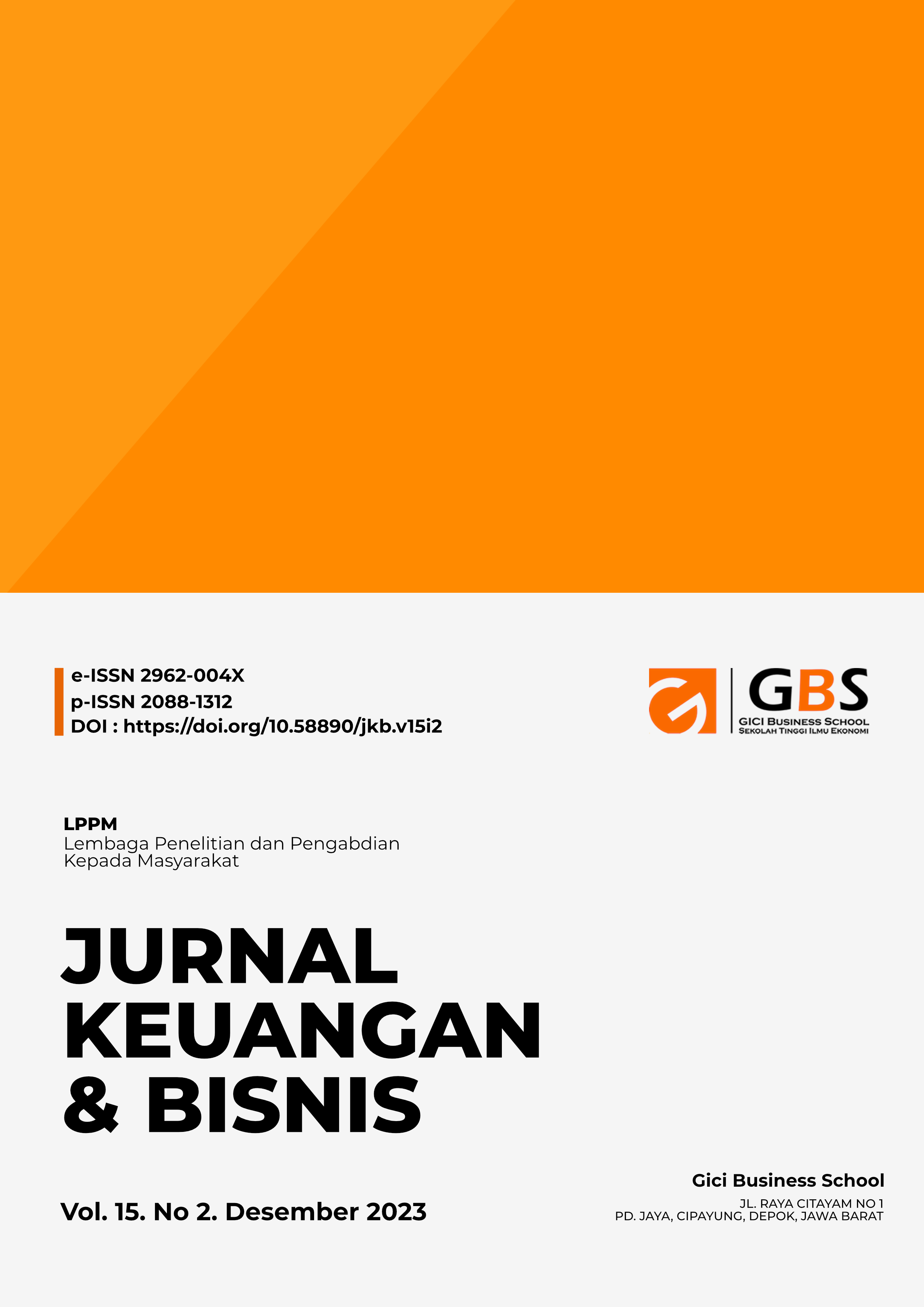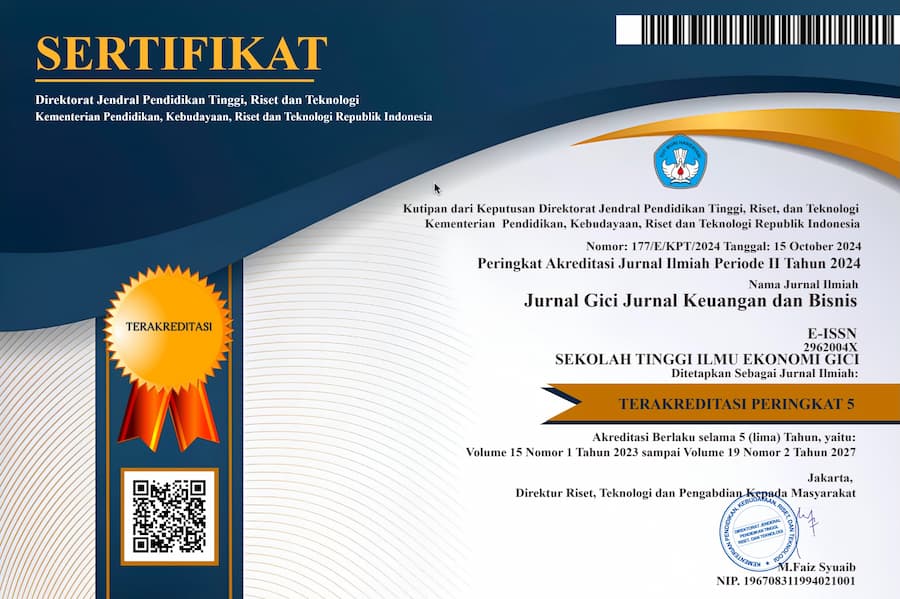ANALISIS DAMPAK RISIKO DALAM PENERAPAN SISTEM SENAR DI PT. PJPT SENOPATI
DOI:
https://doi.org/10.58890/jkb.v15i2.199Keywords:
Professionalism, Financial Management, Coaching Intensity, Financial QualityAbstract
The purpose of this study was to determine and analyze the influence of professionalism, knowledge of financial management, and the intensity of fundraising on financial quality in Kampung Pasir Bagadeu. The type of research used is explanatory research with the research method of collecting data using a questionnaire. The data analysis model used is multiple linear regression analysis. Sample selection was done by purposive sampling. The sample is 100 respondents, using multiple linear regression analysis. The results of the Determination Coefficient Test show that the independent variables in the form of professionalism, financial management and fund management jointly affect the dependent variable of financial quality reaching 84.8% while the remaining 15.2% is influenced by other variables not included in this study, for example environment, land tax payment order, financial socialization, fund security and so on. While the F test shows that the independent variables consisting of professionalism, financial management and fund management simultaneously have a significant effect on financial quality with the results of the analysis Fcount = (371.401) > Ftable = (2.70). The results of the t test show that the variable professionalism (19.416), financial management (5.054), fundraising (5.481) where ttable (1.668) means that partially these variables have a significant effect on financial quality in Kampung Pasir Bagadeu.
Downloads
References
Gina Patriani Manuputty. (2022). Analisis Manajemen Risiko Berbasis Iso 31000 Pada Aspek Operasional Teknologi Informasi Pt. Schlumberger Geophysics Nusantara. Paper Knowledge . Toward a Media History of Documents, 3(April), 49–58.
Hanafi, M. M. (2014). Risiko, Proses Manajemen Risiko, dan Enterprise Risk Management. Management Research Review, 1–40. http://repository.ut.ac.id/4789/1/EKMA4262-M1.pdf
Lokobal, A., Sumajouw, M. D. J., & Sompie, B. F. (2014). Manajemen Risiko Pada Perusahaan Jasa Pelaksana Konstruksi di Propinsi Papua (Study Kasus di Kabupaten Sarmi). Jurnal Ilmiah Media Engineering, 4(2), 109–118.
M. Yusuf Efendi. (2014). Pengaruh Perkembangan Teknologi Informasi. 9 Januari 2014, 23–34. http://efendi.mhs.narotama.ac.id/2014/01/09/pengaruh-perkembangan-teknologi-informasi/
Putri, A. F., & Prasetyo, A. H. (2022). Pedoman dan Asesmen Manajemen Risiko Pada PT Logistik Nasional Tahun 2022-2023. Journal of Emerging Business Management and Entrepreneurship Studies, 2(2), 176–195. https://doi.org/10.34149/jebmes.v2i2.82
Rachman, R., & Province, S. S. (2021). Bidang Transportasi. January.
Raza, E., Sabaruddin, L. O., & Komala, A. L. (2020). Manfaat dan Dampak Digitalisasi Logistik di Era Industri 4.0. Jurnal Logistik Indonesia, 4(1), 49–63. https://doi.org/10.31334/logistik.v4i1.873
Utomo, A. H. (2020). Identifikasi dan Pengukuran Risiko (Issue November 2021).
Wicaksana, A., & Rachman, T. (2018). 済無No Title No Title No Title. Angewandte Chemie International Edition, 6(11), 951–952., 3(1), 10–27. https://medium.com/@arifwicaksanaa/pengertian-use-case-a7e576e1b6bf














